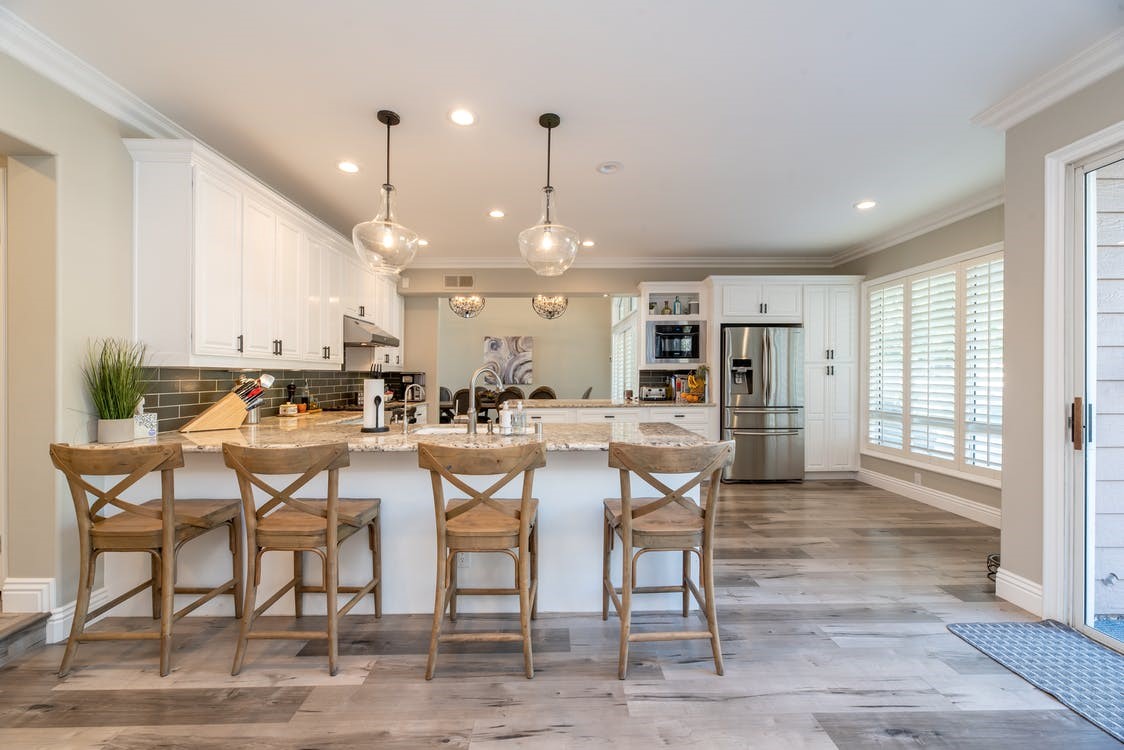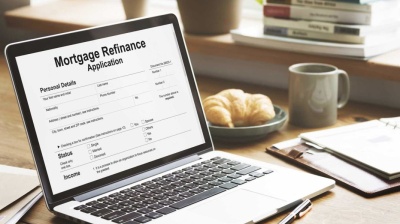.jpg)
 buyers around.
buyers around.
.png)
.png) impression. You can repaint your front door to brighten and refresh your home’s exterior. If you want to spend more money, you can opt to replace the door to a more modern style.
impression. You can repaint your front door to brighten and refresh your home’s exterior. If you want to spend more money, you can opt to replace the door to a more modern style.
-
Garden
-
Sunroom
-
Backyard Patio
-
Outdoor Kitchen
-
Deck Area
 , and then seal with a protective sealer.
, and then seal with a protective sealer.
June is National Homeownership Month, a time to celebrate the benefits that homeownership brings to families, neighborhoods, and communities across America. Not only does homeownership change lives and enhance futures, it is part of the American Dream.
To this day, there continues to be a noticeable shift from renting to homeownership, especially among young buyers. It's a way for people to increase their wealth and home equity. Keep reading to learn about some of the key benefits that homeownership has to offer.
How Did Homeownership Month Start?
National Homeownership Month started as a week-long celebration of homeownership during the Clinton administration in 1995. In 2002, President George W. Bush proclaimed June as the National Homeownership Month. Today, the mortgage industry continues the message of helping people realize the dream of responsible homeownership.
Knowledge is Power
Throughout June, Greenway Mortgage will be sharing some informational pieces on homeownership as we want to raise awareness and encourage more people to consider the benefits of buying their own home. With that said, let’s dive into some of those important benefits and discuss some of the prep work that is required in order to achieve the dream of homeownership.
Benefits of Homeownership:
-
Provides stability.
-
Creates positive environments for families.
-
Improves neighborhoods.
-
Homeowners are more involved in civic affairs, including voting in the last election and knowing their elected officials.
-
Builds wealth.
-
Provides possible tax benefits.
Prep Work:
-
Know your credit score. Having a healthy credit score is vital to the home buying process. Figure out where your credit score stands and strategize some improvements, if necessary.
-
Build your savings. Home buyers will need money available for a down payment and closing costs. This is a great time sit down and get real about your financials. Make a budget, create a timeline and set yourself some saving goals.
-
Figure out your price range. Once you have a handle on your financial situation, the next step is to determine out how much money you can spend. Keep this number in mind when you meet with your real estate agent and Greenway Mortgage Loan Officer.
-
Do your research. Research the area you would like to purchase your home. Take note of school districts, commute times, nearby parks or shopping, and any other things you feel are important to you.
-
Find a real estate agent. It is important to have a trusted real estate agent by your side during your home buying journey. Find someone you can rely on and feel comfortable with.
-
Get your documents in order. A lot of paperwork goes into getting a home loan. Come out on top by getting organized and locating necessary papers ahead of time. Have on hand recent paystubs, W-2s from the past 2 years, recent tax returns and bank and asset statements.
-
Meet with a Greenway Loan Officer. It is crucial to meet with a lender to get pre-approved for a home loan so you know how much home you can afford. This should always be step #1. Also, having a pre-approval letter puts you at an advantage when dealing with a potential seller, as he or she will know you’re one step closer to getting a mortgage.
Are you a First-Time Home Buyer?
To encourage and educate aspiring home buyers, Greenway offers free information and resources. You can visit us online to learn more about buying your first home, first-time home buyer resources, videos, and so much more. Here are a few helpful links which you might want to check out if you’re a future home buyer.
-
FREE First-Time Home Buyer eBOOK – includes handy resources & checklists
-
First-Time Home Buyer RESOURCES – check out our first-time buyer programs!
-
Buying Your First Home – learn everything you need to know!
-
Mortgage Videos – learn about the mortgage process, programs & more
-
Mortgage Calculators – we have an entire library of easy-to-use calculators!
-
Mortgage Terms – get up to speed on some mortgage terminology
-
Ready to get started? Apply Now using our online application.
Greenway Mortgage is proud to be a part of the industry that makes homeownership a reality for so many Americans! When you’re ready to get your journey started, reach out to us!

-
Your Savings Goals
-
Monthly Payments (rent, utilities, car payments, student loans, etc)
-
Weekly Spending (gas groceries, entertainment)

When you refinance to a lower rate, you'll get a lower payment. But the opportunities don’t stop there. Take a look:
Reduce your balance faster.
With a lower interest rate, you pay more principal with each payment, especially in the first years of the loan.
Example: After five years of payments on a 30-year loan of $200,000 at 4%, you would pay $19,706 in principal vs. $17,105 on the same loan at 5%. That's an extra $2,601 in benefit on top of the $7,052 of interest savings. Total advantage = $9,653
Own Free and Clear Sooner. There are 2 ways to make this happen:
- Pay extra principal. Apply your monthly savings toward principal to shorten your loan term by several years. Example: Using the same loan terms from above, pay your $118/month savings as extra toward principal and cut the loan from 30 to 24.33 year.
- Refinance for a shorter term. Rates on 15-year loans are typically lower than 30-year loans, so a payment on a shorter term may still be within a comfortable range for you.
Maximize Your Rate of Return Through Investments.
If you deposit the $118 monthly savings from the example above into a tax deferred account earning 6% over time, it will grow to $81,852 in 25 years. If you use the savings to increase your 401K contribution with a 50% employer match, that figure would equal $122,782. Earning 6% on your money may be tough right now, yet historically, returns on a properly balanced and diversified portfolio are 7% or better. Always consult with a properly licensed financial advisor when making investment decisions.
Tap Into Your Equity.
If you need to make repairs or improvements, you may be surprised at how much cash you might be able to free up without increasing your monthly payment. The same can be said for financing college educations or purchasing a second home or investment property.
Enjoy Peace of Mind.
There’s comfort in making a prudent decision and putting a plan into action.
We're here to review your options and help you decide what might be right for you.
Try Our Refinance Calculator Here.

-
Ask your inspector if you can tag along. This way you can explore your new home in detail and ask questions as you go. This process can give you much more information than the report alone.
-
A home inspection can take 2-4 hours, but may take more time depending on the size of the house.
-
Don’t be surprised if you see the inspector climbing on the roof or crawling around in the attic and on the floors.
-
Roof
-
Plumbing
-
Electrical components
-
Appliances
-
Heating and air conditioning systems
-
Ventilation
-
Windows
-
Basement
-
Structural components
-
Fireplace and chimney
-
Foundation, and so much more







.jpg)
